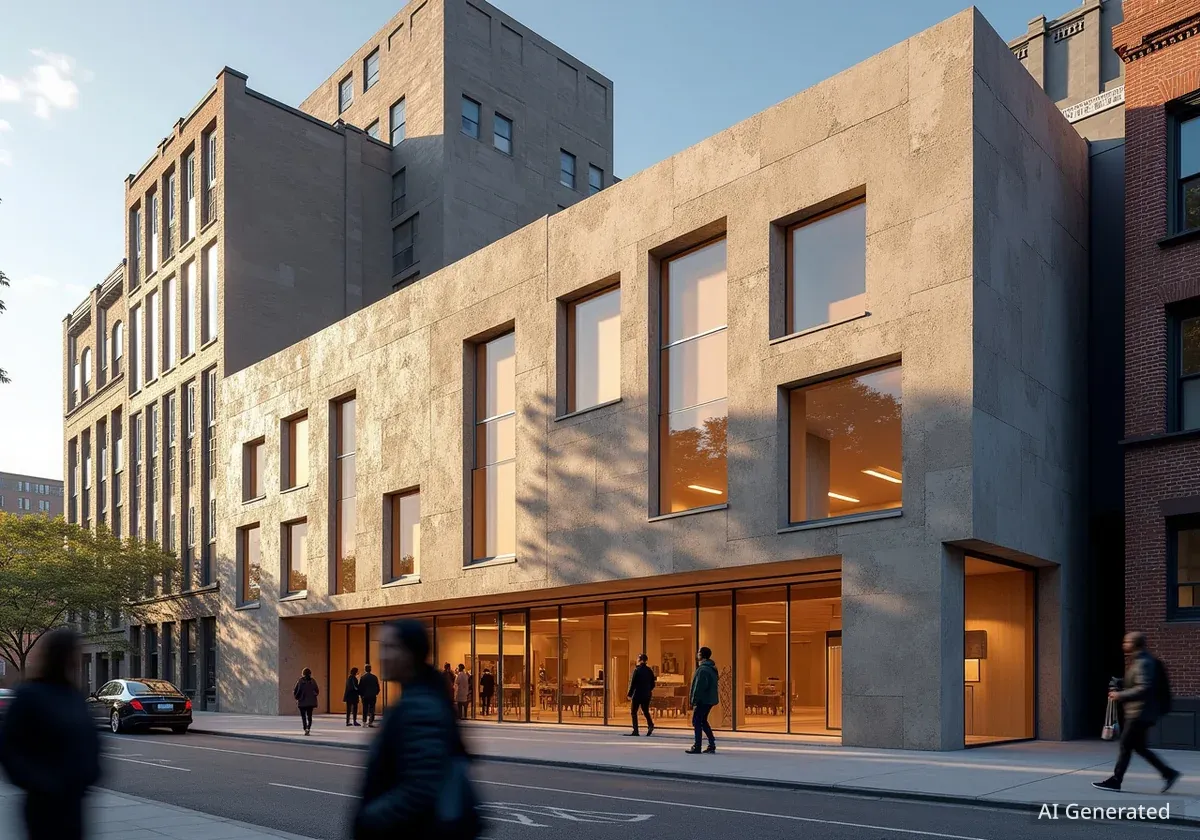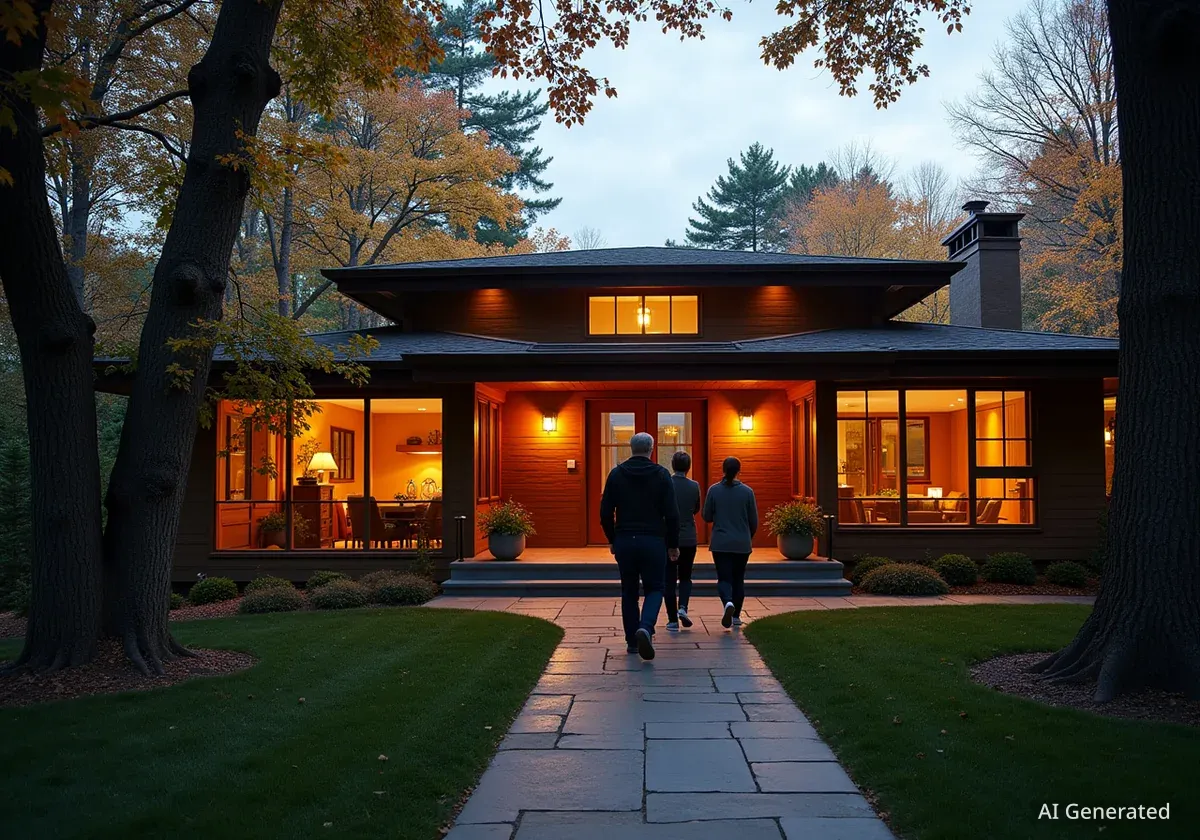Casa Tao, a new architectural project by HW Studio in Puerto Vallarta, Mexico, redefines coastal living by prioritizing shade, natural breezes, and personal history over traditional ocean views. Completed in 2025, the concrete residence draws inspiration from both local climate and Japanese design principles, creating a tranquil environment that emphasizes quiet contemplation.
Key Takeaways
- Casa Tao focuses on shade and natural ventilation, not direct ocean views.
- The design by HW Studio blends local climate response with Japanese aesthetic influences.
- Concrete is the primary material, chosen for its durability and ability to absorb light.
- The house features a stacked geometric plan, lifting social spaces for optimal airflow.
- Personal memories of the owners deeply influenced the architectural concept.
Shade as a Core Design Principle
The design of Casa Tao began with a specific vision: to create a cool, shaded retreat in Puerto Vallarta's intense coastal climate. Rather than orienting the house towards a typical postcard view of the ocean, HW Studio faced the structure towards a tree-lined courtyard. This strategic placement allows the house to capture cooling breezes and natural scents while effectively filtering the strong Pacific sunlight.
The architects explain that the project was deeply rooted in the silent memories of its inhabitants. Gustavo, one of the owners, grew up in Puerto Vallarta. He desired a home that offered coolness and a sense of retreat, similar to his childhood home where shade was a vital element for comfort.
Project Details
- Location: Puerto Vallarta, Mexico
- Architect: HW Studio
- Completion: 2025
- Primary Material: Concrete
Influence of Japanese Aesthetics
Cynthia, Gustavo's wife, brought another key influence to the design: a fascination with Japanese architecture. This interest developed after a trip she took with their daughters. The clients communicated their vision to the design team:
"We'd like to feel as if we were living inside a Japanese museum,"describing a place where time slows down and silence is almost tangible.
These combined experiences and desires guided every decision made by HW Studio. The result is a house with a language of restraint and depth, where every element serves a purpose beyond mere aesthetics. The focus is on creating an atmosphere that promotes peace and reflection.
Stacked Geometries and Strategic Openings
HW Studio organized Casa Tao's layout as a composition of stacked forms. The ground floor houses bedrooms, the garage, and service areas, providing a solid base. Above this, a light, double-height volume contains the social spaces, including living and dining areas. This elevation allows the social spaces to be surrounded by air and views of treetops, capturing the ocean breeze without direct sun exposure.
The architects aimed for the presence of the plaza to be felt without the overwhelming heat. Instead of large glass panes, angled openings frame specific glimpses of trees and sky. This design choice allows the house to observe its surroundings at a measured diagonal, maintaining privacy and controlling light.
Architectural Philosophy
HW Studio often explores the relationship between architecture, nature, and human experience. Their designs frequently incorporate local materials and respond to specific site conditions. Casa Tao exemplifies their commitment to creating spaces that evoke emotion and foster a deep connection to the environment.
The Role of Concrete and Light
Concrete forms the structural core of Casa Tao. HW Studio selected this material for its durability and tactile qualities. The exposed concrete surfaces absorb the coastal sun with a muted glow, preventing harsh reflections. White finishes complement the concrete, enhancing the gentle contrast between areas of shadow and light.
"We wanted the material to settle light, not bounce it,"HW Studio explains.
Over time, the concrete is expected to warm and soften, becoming a surface that records the passage of time and weather. This approach contrasts with materials designed to resist wear, instead embracing natural aging. The combination of solid mass and delicate illumination gives the house a meditative stillness.
Patios for Contemplation
Inside, the bedrooms are arranged around a secluded patio. A curved wall and a single tree within this patio create a soft, inviting threshold. This arrangement encourages slow, deliberate movement throughout the home. The design team describes the shade here as an emotional condition, promising calm and silent protection.
The house turns inward, yet it remains permeable. Subtle apertures allow sea breezes to carry fragrances through the interiors. Shafts of daylight gently slip across the walls, highlighting textures and creating dynamic patterns of light and shadow. Elevated patios become terraces specifically designed for contemplation, where the scent of flowers mingles with the sound of leaves rustling in the wind. Each space is crafted to be an atmosphere for quiet observation.
- Material choice: Durable concrete for longevity and aesthetic depth.
- Light management: Muted surfaces and angled openings control sunlight.
- Sensory experience: Integration of natural sounds, scents, and light patterns.
Echoes of Japanese Literary Influence
HW Studio aims to echo the reflections of Junichirō Tanizaki, a 20th-century Japanese author, particularly from his essay In Praise of Shadows. In this work, Tanizaki explores how subtle light can reveal depth and texture, rather than direct, bright illumination. HW Studio captures this spirit in Casa Tao, allowing light and shade to guide the senses and slow the pace of daily life.
This design philosophy transforms dwelling into a study in presence. It encourages residents to be fully aware of their surroundings, the shifting light, and the natural elements that filter into the home. The house is not just a structure; it is an experience, carefully crafted to evoke a specific emotional and sensory response.
According to the architects, the project's completion in 2025 marks a significant achievement in blending cultural inspiration with practical climate solutions. The design prioritizes sustainability through natural ventilation and light management, reducing the need for artificial cooling and lighting. This approach aligns with contemporary architectural trends that favor environmental responsibility and occupant well-being.
The choice of materials, the orientation of the building, and the internal spatial arrangements all contribute to a holistic design that is both functional and deeply contemplative. Casa Tao stands as an example of how architecture can respond to complex client needs and environmental challenges with grace and thoughtful execution.




